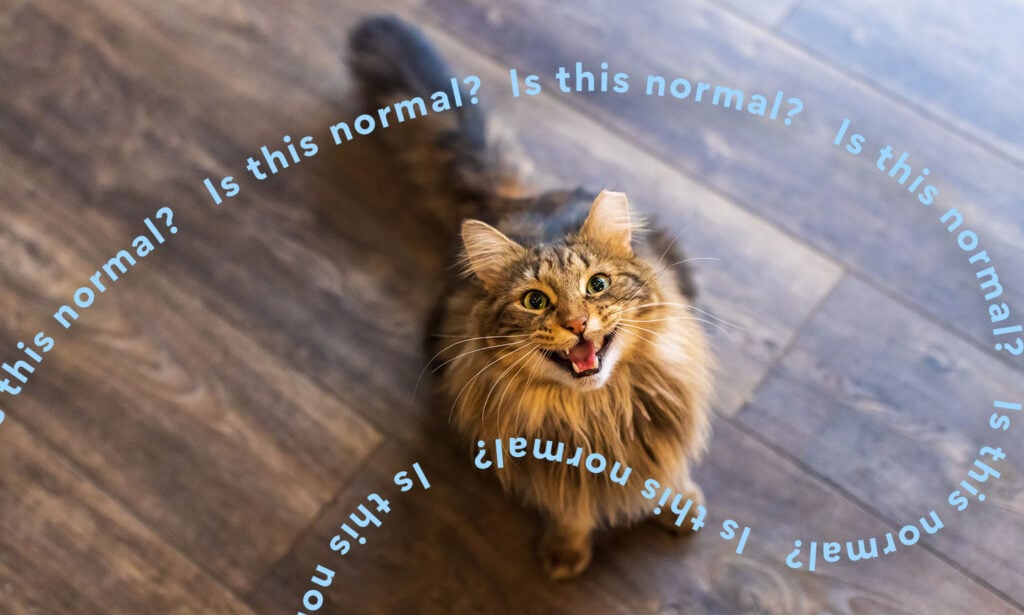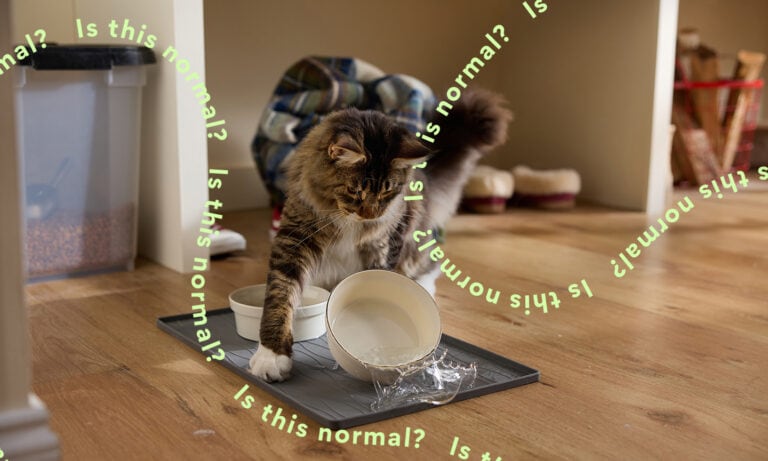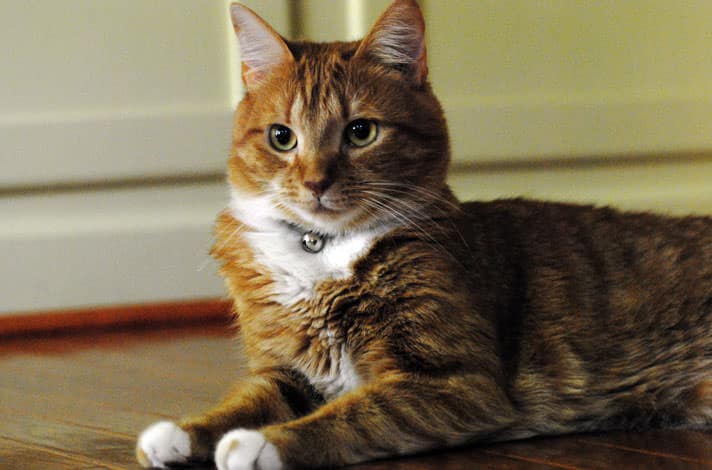Q:My cat meows at me when I talk to him. Why do cats meow back when you talk to them? Is that normal?
Yes, it’s normal. They’re probably just making small talk—or they want something. But in some cases, especially if you notice a change in their normal meowing habits, it could be a sign of a health issue.
Whether you're asking your cat if they’re ready to eat, if they’d like to play, or if they’re really into that new Netflix series, they respond the same way: by looking into your eyes and meowing softly.
Does that mean they understand what you're saying about “The Great British Baking Show,” or are they trying to communicate something else? It’s perfectly normal for a cat to meow back to you when you talk to them, and that meow can mean any number of things, according to certified cat behavior consultant Dilara Göksel Parry of Feline Minds in northern California.
"Domestic cats are social animals, and for many cats, meowing is one of the ways they communicate with us," she says.
Why do cats meow when humans talk to them? Here’s what the experts have to say about what these unique meows mean.
Reasons Why Cats Meow at You
1. They’re Making “Small Talk”
Sometimes, your cat meows back at you for the same reason your neighbor reciprocates small talk about the weather—they’re just being friendly, and as social beings, good communication is important to them.
"Cats try their dead-level best to communicate with us two-legged creatures, and I think sometimes they must get frustrated," says Texas-based cat behaviorist Lana Fraley Rich. "Cats communicate with us, but we don't always get it."
Interestingly, meows (or mews) are a unique form of communication reserved for “conversing” with humans. Adult cats typically don't meow to other cats; instead, they use their body language—like a twitch of the tail or a flattening of the ears—to communicate with other cats.
2. They’re Hungry
You probably could have guessed this one. If you’re chatting in the kitchen and your feline friend joins in with some meows, it might be dinnertime. Even if your cat doesn’t understand what you’re saying, they know that humans respond to back-and-forth conversation better than tail twitches.
“They learn that we respond when they meow, and may learn, for instance, that 'demand' meows—the ones that are loud and hard to ignore—work well when they want something, like food or attention," Parry says.
3. They Want Attention
OK, so you fed your cat, and they’re still answering your every utterance with meows. It’s possible they want their second favorite thing: attention.
“Repetitive meowing usually indicates that your cat wants something and they’re tasking you with providing it,” says Stephen Quandt, a certified cat behaviorist based in New York City. “That ‘something’ could be any number of things, including food, play or petting.”
The next time your kitty has a lot to say, consider an impromptu playtime session!
4. They Like You
If you have a chatty cat, consider it a compliment. Engaging in “conversation” is a sign of affection, especially when the meows are high-pitched, says Quandt.
“Trilling, which sounds like slightly high-pitched rolling Rs, is often done by mother cats towards their young,” explains Quandt. “With humans, it’s a sign of affection.”
5. They’re a Chatty Cat Breed
Some cat breeds are naturally more talkative than others. Siamese cats are known to be particularly vocal, so expect quite a bit of “back talk” and loud meows from these famously verbose furry friends (as well as plenty of purrs and chirps).
“Siamese cats are intelligent and social, and they often crave attention from their [pet parents],” says Dr. Nicole Savageau, VMD, a Texas-based veterinarian. “They're known for being vocal and affectionate.”
6. They’re in Pain
Not all cats have the gift of gab. In fact, some of them rarely, if ever, meow at their humans. “There is a pretty big range from mostly silent to quite chatty,” says Parry.
If your normally quiet kitty starts meowing or your cat is vocalizing more often, begins excessive meowing, or yowls, it’s time to get suspicious and consider pain as a cause.
"Cats are very skilled at hiding pain," Rich says. "If they get to the point where they're communicating with a hiss, or they get very vocal, that can mean that something hurts in their bodies.”
Study these signs that your cat is in pain.
What Is the Best Way To Talk to My Cat?
Do cats enjoy when we talk to them? While it’s impossible to confirm, cats are social creatures who form strong bonds with humans, so feel free to keep chatting with your pet.
Many cat parents tend to “baby talk” with their four-legged friends, which has some benefits, says Parry. "The absence of harsher sounds when we 'baby talk' is a positive,” she explains. “Lower frequency noises like growls are threatening, so we can also surmise that sticking to a higher pitch may be less threatening to them.”
Additionally, most cats are afraid of loud noises, so they prefer a lower volume, adds Parry.
Meowing and Cat Health: When To Be Concerned
It’s normal for cats to meow back when you speak to them. However, some meowing-related behaviors are cause for concern. If you notice that your cat is meowing more, meowing less, or meowing differently than usual, it’s time to make an appointment with your veterinarian—pain, illness or cognitive dysfunction could be causing the behavior.
"It is especially important for cat [parents] to be very aware of any changes in behavior, including changes in vocalization," says Parry.
In addition to meowing patterns, it’s important to pay attention to your cat’s body language, which can give important insight into how your cat feels.
Meow Is the Time To Learn More
Meowing is one of the many ways cats communicate with humans. While cats can’t actually speak to us, meowing back as we talk to them is a normal behavior that can mean a number of different things, and can lend valuable insight into their well-being.
Interested in further improving your kitty communication skills? Learn how to decode cat body language here.
Jelisa Castrodale contributed to this article.
Delve deeper into weird cat behavior:
Share:









